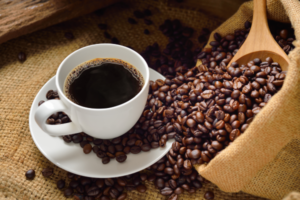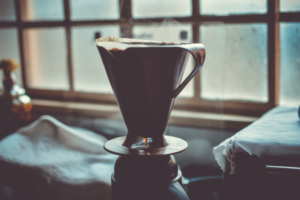In the universe of coffee culture, where the variety of methods and preparations is as extensive as the flavor of this iconic beverage, Drip Coffee emerges as a classic and unparalleled approach for coffee enthusiasts around the world. From the filter to the cup, this method offers a sensory journey that combines technical precision with the art of extraction, resulting in a unique experience for lovers of this age-old drink.
In this article, we will delve deep into the fascinating world of Drip Coffee, exploring its origins, the essential components of this method, its different regional variations, and the sensory nuances that make each cup a celebration of the balance between simplicity and complexity. Get ready to unravel the secrets behind this timeless technique as we discover together how a dripping infusion can transform into a true liquid masterpiece.
A Brief History of Drip Coffee
Drip coffee, also known as filtered coffee, has a long history that can be traced back to ancient times. The earliest evidence of this brewing method dates back to 11th-century China, where it was used to brew tea. However, it wasn’t until the early 20th century that drip coffee gained prominence as a popular coffee brewing technique.
The Science Behind Drip Coffee
Drip coffee brewing involves a precise balance between water, coffee grounds, time, and temperature. The process begins with hot water being poured over a filter containing ground coffee. As the water passes through the coffee grounds, it extracts the flavors and oils, resulting in a brewed coffee that drips into a collecting vessel below.
Choosing the Right Equipment
To achieve the best drip coffee, it’s essential to select the right equipment. There are various options available, from manual pour-over setups to automatic drip coffee machines. The choice depends on personal preference, desired brewing control, and convenience.
The Importance of Water Quality
Water quality plays a crucial role in the taste of drip coffee. Ideally, the water used should be clean, free from impurities, and have the right mineral content. Tap water can sometimes contain chemicals or minerals that impact the coffee’s flavor, so filtered or bottled water is often recommended.
Selecting the Perfect Grind Size
Grind size is a critical factor in drip coffee brewing. The ideal grind size for drip coffee falls between medium and medium-fine. Finer grounds can result in over-extraction and a bitter taste, while coarser grounds may under-extract, leading to a weak brew.
Understanding the Coffee-to-Water Ratio
Achieving the perfect coffee-to-water ratio is essential for a well-balanced cup of drip coffee. The general guideline is to use approximately one to two tablespoons of coffee grounds for every six ounces of water. However, personal preference can dictate adjustments to this ratio.
The Role of Brew Time
The brew time, or the time it takes for water to pass through the coffee grounds, affects the flavor and strength of the resulting brew. On average, the ideal brew time for drip coffee ranges from three to five minutes. Longer brew times may result in over-extraction, while shorter times can lead to under-extraction.
Brewing Temperature Matters
Water temperature greatly impacts the extraction process. The recommended brewing temperature for drip coffee is between 195°F and 205°F (90°C and 96°C). This range allows for optimal flavor extraction without scorching the coffee grounds.
The Art of Blooming
Blooming is a crucial step in drip coffee brewing, particularly when using freshly roasted coffee. It involves pouring a small amount of hot water over the coffee grounds, allowing them to degas and release trapped carbon dioxide. This process enhances the coffee’s flavors and aromas.
Drip Coffee Variations
While drip coffee is often associated with its straightforward brewing method, there are variations that add complexity and uniqueness to the experience. Some popular variations include the Chemex pour-over, the Hario V60, and the AeroPress. These methods offer different filters, water flow rates, and brewing techniques, resulting in diverse flavor profiles.
Exploring Flavor Notes
Drip coffee has the ability to showcase a wide range of flavor notes, depending on the origin and roast level of the coffee beans. From fruity and floral to chocolatey and nutty, drip coffee can offer a delightful sensory experience for coffee enthusiasts.
Pairing Drip Coffee with Food
Pairing coffee with complementary foods can enhance the overall taste experience. Drip coffee’s balanced and nuanced flavors make it versatile for pairing with various foods, including pastries, chocolates, cheeses, and even certain savory dishes.
The Ritual and Relaxation of Drip Coffee
Drip coffee brewing can be a ritualistic and calming experience. From carefully measuring the ingredients to patiently waiting for the brew to complete, it offers a moment of tranquility and mindfulness. The process can be a form of self-care and a way to start the day on a positive note.
Sustainability and Drip Coffee
As sustainability becomes increasingly important, it’s worth considering the environmental impact of different coffee brewing methods. Drip coffee, with its reusable filters and minimal waste, is generally considered an eco-friendly option compared to single-use coffee pods or capsules.
The Role of Drip Coffee in Specialty Coffee Culture
Drip coffee holds a significant place in specialty coffee culture. It is often used as a benchmark for evaluating the quality of coffee beans and the skill of the barista. Many specialty coffee shops focus on perfecting the art of drip coffee brewing, showcasing single-origin beans and highlighting their unique characteristics through this method.
Drip Coffee: A Versatile Brewing Method
One of the advantages of drip coffee is its versatility. It can accommodate different coffee preferences, from those who enjoy a bold and robust cup to those who prefer a milder and smoother brew. By adjusting variables such as grind size, coffee-to-water ratio, and brewing time, individuals can tailor their drip coffee to suit their taste preferences.
The Convenience of Automatic Drip Coffee Machines
Automatic drip coffee machines have gained popularity for their convenience and ease of use. These machines simplify the brewing process, allowing users to set the desired parameters and enjoy a fresh cup of coffee with minimal effort. Automatic machines are ideal for those with busy lifestyles or offices where multiple cups of coffee are needed.
Drip Coffee at Home: Brewing Tips and Tricks
Brewing drip coffee at home can be a rewarding experience. To enhance the results, it’s important to use freshly roasted beans, grind them just before brewing, and maintain consistency in measurements and techniques. Additionally, experimenting with different beans and brewing variables can help discover unique flavor profiles.
The Impact of Filter Choice on Drip Coffee
Filters play a crucial role in drip coffee brewing. The choice of filter material, such as paper, cloth, or metal, can impact the flavor and clarity of the brew. Paper filters are commonly used as they effectively remove oils and sediment, resulting in a clean and crisp cup of coffee.
Drip Coffee vs. Other Brewing Methods
While drip coffee has its own charm, it’s interesting to compare it with other popular brewing methods. Each method, whether it’s French press, espresso, or cold brew, offers a distinct taste experience. Drip coffee stands out for its balance, clarity, and ability to highlight the nuances of the coffee beans.
Exploring Drip Coffee Around the World
Drip coffee variations can be found in different regions worldwide, each with its own cultural significance and unique brewing techniques. From the Japanese pour-over methods to the traditional Italian Moka pot, drip coffee has evolved and adapted to different cultures, reflecting the diversity and richness of coffee traditions.
The Future of Drip Coffee
As the world of coffee continues to evolve, so does the drip coffee brewing method. Innovations such as precision coffee makers, smart brewing technologies, and sustainable filter options are shaping the future of drip coffee. With advancements in equipment and a growing appreciation for quality coffee, drip coffee is expected to remain a beloved brewing method.
Drip Coffee: More than a Beverage
Beyond its role as a beverage, drip coffee holds a cultural and social significance. It brings people together, sparks conversations, and creates moments of connection. Whether enjoyed at home, in coffee shops, or during special gatherings, drip coffee fosters a sense of community and shared enjoyment.
Conclusion
Drip coffee, with its rich history, scientific nuances, and delightful flavors, continues to captivate coffee enthusiasts worldwide. It offers a versatile and accessible brewing method that allows individuals to explore the complexities of coffee and customize their brewing experience. From the choice of equipment and water quality to the grind size and brew time, every element contributes to the final cup. Drip coffee is more than just a beverage; it’s a journey of exploration, ritual, and appreciation. So, grab your favorite brewing equipment, select some high-quality beans, and embark on a fascinating adventure into the world of drip coffee.



